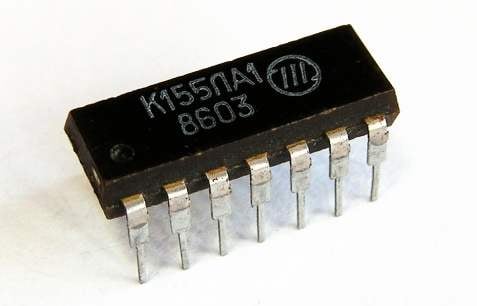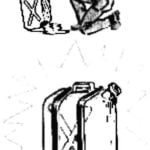 In the “M-K” appear frequently describe designs that use integrated circuits. The production of these modern elements are so expanded that their widespread introduction in household equipment and in the development of ham radio now is no surprise. However, there still exists an opinion that “communication” is with chips only available to experienced hams. Meanwhile, in the chips can be used to create simple devices to collect that it is easy even for those who make their first steps in Amateur radio.
In the “M-K” appear frequently describe designs that use integrated circuits. The production of these modern elements are so expanded that their widespread introduction in household equipment and in the development of ham radio now is no surprise. However, there still exists an opinion that “communication” is with chips only available to experienced hams. Meanwhile, in the chips can be used to create simple devices to collect that it is easy even for those who make their first steps in Amateur radio.
In previous issues we have introduced you with the technology of chip production. Today, read about their use.
The development of components of microelectronics has passed three stages. Now all the chips are divided into two broad classes: logical and linear impulse. In addition, in each class there is a wide variety of series. Technical characteristics of newly-issued series are compared, the worst are phased out.
Logic circuits used in computers, in devices discrete electronics and automation (relays, generators of rectangular pulses, counters).
At first it was a small device, made on the basis of registerno-transistor logic (RTL). The main, or as it is called, “basic”, element chips in this class is the inverter (Fig. 1).

Fig. 1. Inverter

Fig. 2. Gate RTL.
Invert means “turn” phase voltage. For example, at the input of the inverter is low voltage, and the output is high, and conversely, if the input high voltage, then it should be low. In other words, the inverter implements a logical function of KE, or “denial”. The closed state of the transistor (high output voltage) corresponds to the signal “1” and an open (low output voltage) is “On”.
The most characteristic are the RTL chip series К114 (Fig. 2). However, they have proved to be significant drawbacks: low noise and little performance. Therefore, they were replaced by chip-based diode-transistor logic (DTL). They have an element that implements the logical function of inversion (Fig. 3), in addition to limiting resistor RCM, has diodes D1, D2, DZ. When the input voltage is missing, the current through the chain Rсм, D3 unlocks the transistor T1. The output in this case will be a small voltage corresponding to a logical zero. If the input signal, the current will flow through RсМ and D1 or D2. The transistor in this case will be closed, and a high voltage at its output corresponds to a logical “1”.
The performance of these elements was significantly higher than that of RTL. Also increased and noise immunity. But the presence of two power sources — a lack of DTL.
One of the latest developments — ICS that implement the transistor-transistor logic (TTL). The input element they have an output stage transistor (Fig. 4). The number of emitters determines the logical capacity of each chip. The working principle of these devices is largely similar to the items of DTL. The current through the limiting resistor RCM is part of the base — collector unlocks T1 and the transistor T2. This happens when all inputs are signals “1”. If you submit “On”, the collector of T1 is low potential that is different from the input at a value of about 0.2 V. the Transistor T2 is locked, and the output will be “1”.

Fig. 3. The logical element of the DTL.

Fig. 4. TTL logic element.
Such chips (they are represented by series of К133 and of K155) is widespread due to the high performance and the capability to operate from a single power supply. But the immunity they have proved to be slightly lower than those of items of DTL.
Currently developed and produced integrated circuits series К147 and К172. They are designed for computers and devices discrete automation. The main elements of these circuits — field-effect transistors with insulated gates (see “M-K”, № 3, 1975), or otherwise, the transistors with MOS structure (metal — oxide-semiconductor) and mos-structure (metal — insulator — semiconductor). Minerals series К147 and К172 (each up to 20 circuits with different logical possibilities) feature high speed and efficiency.
The composition of some discrete circuits, for example К217, includes a transistor matrix. They contain four transistors, which can be used as usual to build receivers, amplifiers, etc.
Y. EROKHIN, engineer



